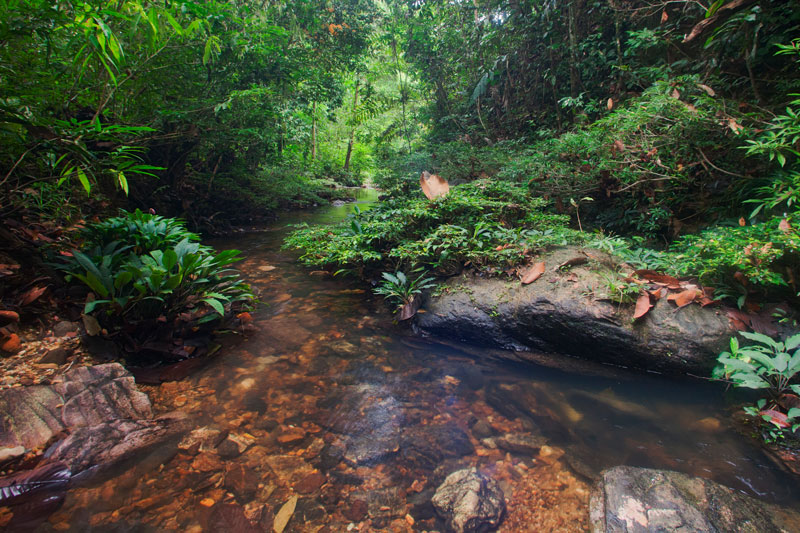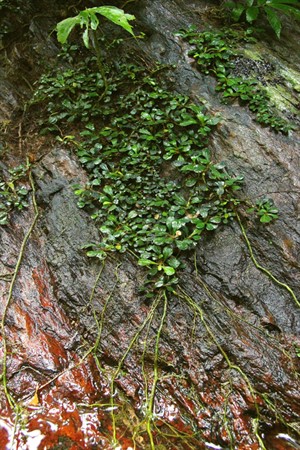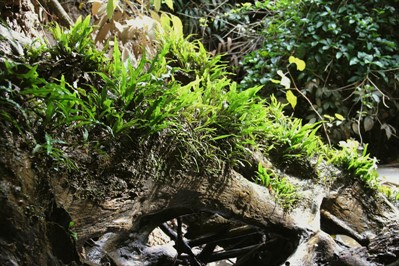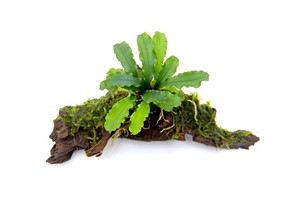Copyright: The following article has been originally published on the Dennerle Plants homepage: Rheophytic plants.

Rheophytes - masters of adaptation:
It is amazing how plants can adapt to natural habitats and still survive in difficult environmental conditions. During the evolution, some plants have evolved into absolute specialists, e.g. the rheophytes.

Rheophytes colonize fast flowing waters with various low and high water seasons. In the monsoon season they usually live submerged. According to the genus or species, they continue to grow under water or they outlast this phase with their growth stopped. The leaves are often hard and leathery like the well known Anubias and Bucephalandra and most of them are elongated to oval. This leaf shape results in less resistance to fast flowing water. The ferns Microsorum and Bolbitis have also adapted to such rapid streams, cascades and waterfalls. Grow firmly rooted on rocks and tree roots in splashy areas with vigorous rhizomes. Many mosses can also be found in these habitats - making for an ideal community.
|
Bucephalandra pygmaea Kapit |
Schismatoglottis roseaspatha |
|

Rheophytes grow best on wood or stone in the aquarium. They do not do well, if planted in the substrate, especially if the rhizome (thickened shoot) is planted very deep. Depending on the size, you can attach the plants with a special plant glue or tie them up.
|
Microsorum spec. on wood |
Ooia grabowskii on rocks |

Plants that are already firmly grown on roots or stones are an important part of our product range. A nature-like design is very easy with the Dennerle Decor Plants. Simply push the planted root or stone gently into the substrate - and you' re ready to go!
_____________
Check out our full range of Rhephytic Plants available as: Decor Plants






